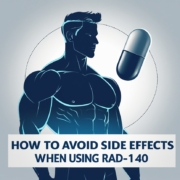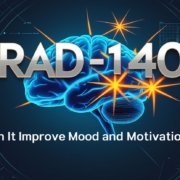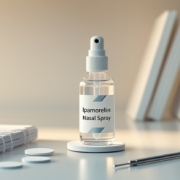From Awareness to Action: Grassroots Movements Combating Addiction in New Jersey
Introduction
New Jersey stands at the epicenter of a protracted struggle against addiction—a crisis as complex as it is pervasive. From suburban enclaves to urban corridors, substance abuse has carved a deep groove into the state’s public health fabric. Traditional responses—rehab centers, judicial diversion programs, and statewide campaigns—have often been reactive, fragmented, or inaccessible.
In the face of systemic inertia, grassroots movements have emerged as a potent counterforce. Born of urgency and community tenacity, these initiatives are reframing addiction as a collective concern, not a private affliction. By weaving empathy into action, local efforts are charting new pathways to recovery, one neighborhood at a time.
Navigating Access to Recovery Treatment
Securing a prescription for Subutex begins with a consultation from a licensed healthcare provider who specializes in addiction medicine.
After evaluating your medical history and the severity of opioid dependence, the physician may determine that Subutex is appropriate for managing withdrawal symptoms. Typically, you’ll need to participate in a structured treatment plan, which may include counseling and regular monitoring.
It’s crucial to be honest about substance use, as transparency strengthens your case for medication-assisted treatment. Understanding how to get prescribed Subutex involves not only clinical evaluation but also a commitment to recovery protocols set by your provider.
Understanding the Addiction Epidemic in New Jersey
Addiction in New Jersey defies easy categorization. In 2023 alone, over 3,000 residents died from drug overdoses—a staggering figure that reflects both the potency of synthetic opioids like fentanyl and the insufficiency of traditional interventions. The state has also seen a surge in methamphetamine and prescription drug misuse, underscoring the evolving nature of substance dependency.
Geographic disparities paint a nuanced picture. Camden and Newark battle entrenched cycles of poverty and trauma, while affluent suburbs contend with clandestine opioid dependencies. Demographically, addiction touches every age, but young adults aged 18–35 remain most at risk, especially in communities strained by unemployment and housing instability.
The crisis, while chemical in nature, is deeply social in origin. Fragmented family units, untreated mental illness, and limited access to preventative care create a fertile ground for dependency to take root.

The Rise of Grassroots Movements
Grassroots movements are decentralized, citizen-led efforts characterized by passion, proximity, and persistence. Unlike large-scale bureaucracies, they thrive on immediacy and adaptability—qualities essential when addressing a crisis as fluid as addiction.
New Jersey’s grassroots resurgence began in earnest in the early 2010s, catalyzed by high-profile overdose deaths and growing disillusionment with policy inaction. What began as vigils and Facebook groups evolved into organized networks of volunteers, peer recovery specialists, and harm reduction advocates.
These efforts reject the sterile language of pathology in favor of human-centered storytelling and direct service. They are reclaiming the narrative around addiction—one grounded in dignity and lived experience.
Profiles in Action: Local Movements Making an Impact
City of Angels NJ, based in Hamilton, exemplifies the power of peer-driven intervention. Their model pairs individuals in recovery with those just beginning their journey, offering mentorship that is both practical and profoundly empathetic. Their free services—ranging from family counseling to recovery coaching—fill critical gaps left by institutional providers.
The NJ Harm Reduction Coalition adopts a more radical posture. Operating in defiance of outdated paraphernalia laws, the group provides sterile syringes, fentanyl test strips, and Narcan kits directly to users. Their mantra is simple: meet people where they are, not where society expects them to be.
Meanwhile, The Raymond J. Lesniak ESH Recovery High School in Roselle offers a rare blend of academic rigor and therapeutic support. This public high school serves teens in recovery, providing a stigma-free learning environment where sobriety is not just encouraged—it’s safeguarded.
Understanding Color Variations in Medication
While the appearance of medications may seem superficial, color distinctions can signify differences in formulation, manufacturer, or inactive ingredients.
In the case of orange Subutex vs white Subutex, both contain the active ingredient buprenorphine, used to treat opioid dependence, but are produced by different manufacturers. The orange tablets are typically generic versions, often flavored or coated, while the white ones are usually branded or older generics.
Though the therapeutic effects remain similar, some patients report varying side effects or effectiveness due to the binders and fillers used. Always consult a healthcare provider before switching between versions.
Strategies and Tools of Engagement
These movements employ a rich arsenal of interventions. Narcan training sessions, once rare, are now commonplace in libraries, churches, and coffee shops. Volunteers demystify the life-saving medication, empowering everyday citizens to become first responders.
Mobile harm reduction units crisscross urban and rural regions alike, distributing safe-use supplies and offering on-the-spot health screenings. Their presence subverts the alienation many users feel from formal healthcare institutions.
Equally critical is the digital storytelling revolution. Individuals share raw, unscripted accounts of addiction and recovery through podcasts, Instagram reels, and live panels. These narratives chip away at stigma, reminding the public that addiction wears many faces—and recovery is always within reach.
Challenges and Barriers to Sustainability
Grassroots efficacy is frequently undermined by a lack of institutional support. Many groups operate on shoestring budgets, reliant on sporadic donations and precarious grant funding. Despite proven impact, they often encounter bureaucratic resistance when seeking legitimacy or expansion.
Stigma remains a formidable adversary. Misconceptions—such as equating harm reduction with enabling—persist among policymakers and the public alike. This social skepticism limits access to facilities like supervised injection sites or recovery housing.
Coordination between grassroots groups and formal healthcare systems is also fraught. Conflicting philosophies—clinical detachment versus experiential empathy—can hinder collaboration and dilute outcomes.
Building Bridges: Collaboration and Expansion
Despite these obstacles, promising synergies are emerging. Local movements are forming partnerships with county health departments, enabling broader service delivery and data sharing. These alliances bolster credibility and open new funding avenues.
New Jersey’s successful grassroots models are attracting attention from neighboring states like Pennsylvania and Connecticut, prompting discussions about replicability and regional networks. The goal is clear: scale impact without compromising authenticity.
A growing emphasis on youth leadership marks another evolution. Programs like “Young People in Recovery” cultivate a new generation of advocates who blend social media fluency with on-the-ground activism—ensuring that the momentum continues beyond a single crisis cycle.
Conclusion
In New Jersey, the battle against addiction is no longer confined to sterile clinics or distant legislative halls. It is unfolding in church basements, high school gyms, and Zoom calls—where community members transform pain into purpose.
Grassroots movements do not offer a panacea. But they do offer something rare in the realm of public health: proximity, perseverance, and profound humanity. As these movements grow, they beckon all of us—from bystanders to stakeholders—to transition from passive awareness to purposeful action.











